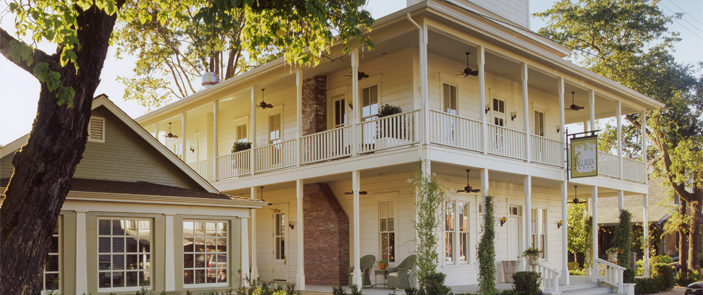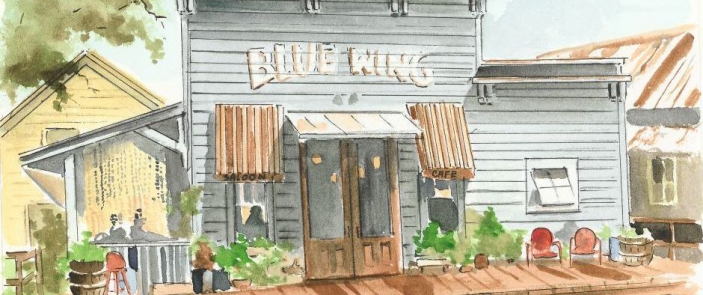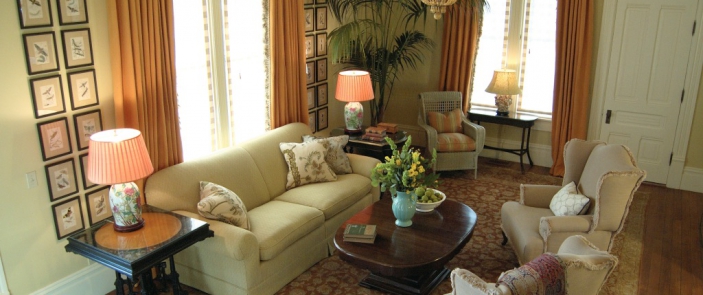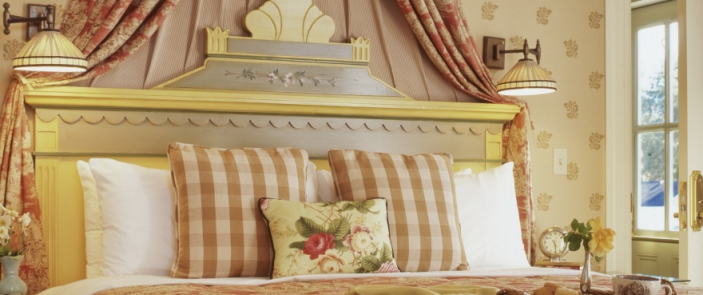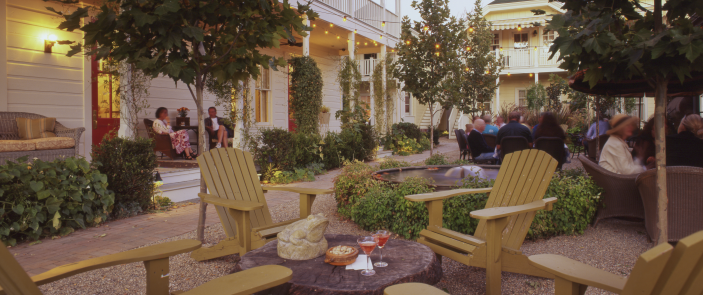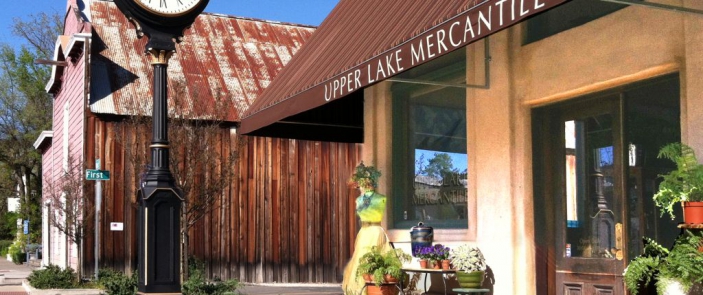History
Tallman Hotel - Circa 1870 and Beyond
.jpg) On July 25, 2008, the Tallman Hotel was added to the California Register of Historical Resources as a Point of Historical Interest (#SPHI-LAK-010).
On July 25, 2008, the Tallman Hotel was added to the California Register of Historical Resources as a Point of Historical Interest (#SPHI-LAK-010).
The original Tallman House Hotel was built on the current site in the 1870s by Lake County pioneer Rufus C. Tallman. The hotel was part of a full-service facility consisting of hotel, livery stable and saloon designed to serve passengers traveling to Clear Lake and the nearby hot springs resorts. By the 1880s, Upper Lake had become the terminus of the Cloverdale and Clear Lake stage lines, which brought tourists to popular resorts such as Witter Springs, Saratoga Springs, Bartlett Springs and the original Le Trianon at Blue Lakes.
CLICK HERE to see an interesting article on the Cloverdale-Tallman stage connection in the October 17, 2012 edition of the Cloverdale Reveille.
Rufus Tallman was born in 1834 in Syracuse, N. Y. In 1852, at the age of 18, he left his family and came to the California goldfields through Panama. In 1856, he became one of the first white settlers in Lake County, settling in the agricultural area just north of Clear Lake. In 1861, he married Mary Ellen Moore, whose family had settled in nearby Scotts Valley. Having recently married, she was left behind as the Moore family went on to found a town called Colonia California in Argentina. Thirteen children were born to Rufus and Mary between 1862 and 1893 (when Mary was 47 years old!).
The original Tallman House Hotel burned to the ground on October 29, 1895. The San Francisco Chronicle reported that “it was a large two-story structure and had always been a popular resort. The loss is estimated at between $3000 and $4000. It is said not to have been insured.” The next year, Tallman reconstructed the hotel, using a more modest floor plan and materials (mostly redwood) in abundant supply in the area.
Rufus Tallman died in 1904 and his wife in 1912. They divided their various properties among their many offspring. The hotel went to daughter Winnie, who had married Henry H. Riffe. Following the masculine centered ethos of the time, the name was changed from Tallman House to Riffe’s Hotel. According to Lillian Tallman Atkission, recently deceased the last surviving grandchild of Rufus and Mary, her aunt Winnie basically ran the hotel while husband Hank took charge of a pool hall and cigar store further down Main St. With a Chinese cook, Winnie prepared three meals a day for her guests, cleaned the rooms and did the laundry by hand and flatiron. Having no children of her own, Winnie was assisted periodically by some of her many relatives.
Leather-bound hotel registers from 1906 to 1959, now on loan to the Hotel from the Lake County Museum, reflect a changing business mix for the Hotel over time. The popularity of hot springs resorts had declined by 1920, but this part of Lake County had developed as a significant agriculture and timber center. Sawmills, feed mills and a major bean cannery were located in or near Upper Lake. The guest books reflect continued active business into the 1920s, but with a shift to guests from Lake and surrounding counties.
As highway access improved across rural America and economic development in remote areas became less dependent on railroad access, small towns such as Upper Lake began to lose their “reason for being.” Forest and agricultural products could be exported in bulk, tourists could head directly to their final destination and shoppers could reach markets in the larger towns. The decline of Upper Lake in particular can be dated to the 1920s and 1930s as tourist interest came to be focused on the lake itself rather than the springs. Chain stores such as Sears and Safeway drew shoppers to the larger towns of Lakeport and Ukiah. The new Highway 20 linking Ukiah with the Sacramento Valley opened along the northeast shore of the lake in 1931, bypassing both the Upper Lake town center and the rough crossing over the mountains through Bartlett Springs.
On May 28, 1924 nearly the entire business section of Upper Lake was destroyed by fire. The only surviving buildings were the Hotel and adjacent livery stable/garage, the bank building and the Odd Fellows Hall. All other buildings in Upper Lake date from the rebuilding that took place after this fire. With the Depression and then construction of more modern motels along the lakefront, the Hotel gradually fell on hard times. After Hank Riffe died in 1937, Winnie continued to operate the hotel, more as a guesthouse or boarding house, into the late 1940s. She died in 1972 at age 94.
In the mid-1950s, the hotel was purchased by Harry Thorpe who operated it as a nursing home and later as housing for transient agricultural workers. In 1965, the property was purchased, probably at a tax lien sale, by Elizabeth Wilson, who accumulated many properties in the area in this manner. Despite occupying a prominent position on the main street of town, the hotel property had, for over 40 years, been vacant and uncared for prior to its purchase by Lynne and Bernie Butcher in 2003. With the contribution of many local craftsmen and the expert design firm of Candra Scott & Anderson, the Butchers then undertook the two year restoration, upgrade and expansion of the facilities together with reconstruction of the Blue Wing Saloon next door that had been torn down during Prohibition. The Saloon/Restaurant opened in June 2005 and the Hotel was re-opened in June 2006.
The Tallman Hotel (reverting to its original name) is historically significant because of its simple western vernacular architectural style, its connection to Lake County pioneers Rufus and Mary Tallman and, most important, the central role it played in the development of Upper Lake and Lake County as a transportation, tourism and agribusiness center at the turn of the century. For these reasons, in 2008 the Hotel was listed as a point of historical interest on the California Register of Historical Resources. In 2012 descendents of Rufus and Mary donated a 1902 Kimball upright piano, at one point resident in the hotel, which is now placed prominently and played often in the Blue Wing. With restoration of the Tallman Hotel, together with the restored livery stable and reconstructed saloon nearby, tourists will hopefully get a sense of the rural past while this small town acquires a new “reason for being.”
In April, 2014, the Butchers purchased and remodeled the 1921 building that originally housed the Bank of Upper Lake. Re-christened the Upper Lake Mercantile, the store is open from 10:00 to 6:00 daily and offers a wonderful selection of gift and art items as well as unusual products crafted locally.
_f185x200_1315605671.jpg)
Thanks for being interested in the history of the Tallman Hotel.
Lynne and Bernie Butcher



